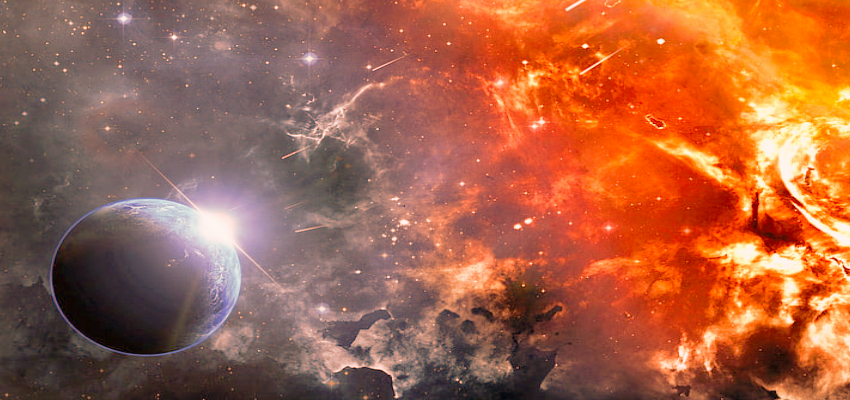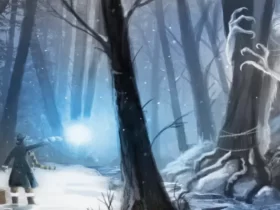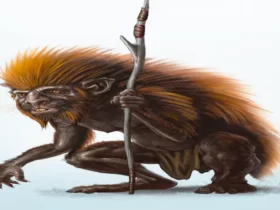Cthugha is a fictional deity appearing in the works of H.P. Lovecraft shared universe of mythos, a renowned American writer of weird fiction and horror stories. Cthugha is one of the Great Old Ones, a group of powerful and malevolent beings that reside in the universe and threaten the existence of humanity. Cthugha is depicted as a fiery entity, often resembling a ball of flame or a blazing sun. In Lovecraft’s stories, Cthugha is worshiped by a cult of humans who seek to summon the deity and bring about its wrath upon the world. However, the full extent of Cthugha’s power and motives remain unknown. As with many of the beings in Lovecraft’s works, the idea of Cthugha is meant to evoke a sense of cosmic terror and awe in the reader, reflecting the idea that there are forces beyond human comprehension that can threaten our existence. Before heading towards Cthugha mythos, you would also love to read about fire demons.
Cthugha Mythology In Lovecraft Inspired Fiction

Cthugha is a mythical being that is shrouded in mystery and fear. Despite limited information, what is known about Cthugha is truly frightening: a fiery spirit, Cthugha takes on the appearance of a ball of orange plasma that is the size of a small planet, with dark blotches and spewing rotating flames. Although it originated from the Fomalhaut star system, it is now kept captive by the Elder Gods in an undisclosed place. Unlike several other Great Old Ones, Cthugha is known to be a dangerous adversary of the Outer Gods.
In a tale about Cthugha, a group of devotees in Wisconsin attempted to invoke the Living Flame in order to repel an incarnation of Nyarlathotep.
Related Reads: Kthanid (Member Of Elder Gods & Brother Of Cthulhu) Explained With Story
Cthugha – A Deadliest Fire Vampire Of The Universe

While it’s feasible to come across these beings independently (especially by utilizing the appropriate incantations), the Cthugha’s Flame Creatures, also referred to as Fire Vampires, always accompany their lord during summonings to Earth. They emerge as a cloud of shining dots surrounding Cthugha and promptly set fire to everything in their path while he is present.
It’s Not Lovecraft But Derleth, Pugmire & Other Authors Continue Mythos With Cthugha & Fire Elemental

The term “Lovecraft Country” was used to describe the fictional location in New England where many of H.P. Lovecraft’s stories took place or were referenced. The Miskatonic River runs through Arkham, which is the name of the university there, as well as Innsmouth, Dunwich, and Kingsport. These places are based on real locations that Lovecraft visited in Massachusetts, but exist in an imaginary realm within his stories. In works such as “The Dunwich Horror,” Lovecraft Country is depicted as a distinct character.
Subsequent writers in the Lovecraftian mythos have created their own distinct geographic locations. Ramsey Campbell, with the suggestion of August Derleth, set his early Mythos stories in the Severn Valley featuring towns such as Brichester and Goatwood, a location that is still being developed today. W. H. Pugmire, on the other hand, located his Sesqua Valley in the Pacific Northwest and filled it with his own unusual creatures and characters, including the magician Simon Gregory Williams and the poet William Davis Manly.
In a tale set within the region of Sesqua Valley, W. H. Pugmire pays tribute to August Derleth.
W. H. Pugmire – Initially, we believed it to be a poem or an evil hymn, but upon closer examination, we found that it was a supplication to something named Cthugha, believed to be a fire element. The idea that Great Old Ones embody physical elements is foolish, as if these cosmic beings can be shaped by earthly laws or comprehension. Completely ridiculous, yet in this instance, there seems to be some validity.
As an author, Pugmire was a tinkerer and many of his stories demonstrate the outcome of revisions between printings. While the story title, narrative, and main characters remain the same, the text in each publication differs – sometimes slightly, sometimes significantly. The revised versions generally have a cleaner feel, the result of reviewing an older work a decade later and refining it based on the perspectives gained through age and experience.
In the 1933, February issue of Weird Tales, Donald Wandrei launched “The Fire Vampires,” a story set in the 24th century that features the fiery extraterrestrial entity Fthaggua. The concept of elementals in the Lovecraftian mythos dates back to August Derleth’s “The Thing That Walked On The Wind” (published in Strange Tales of Mystery and Terror in January 1933). Although Wandrei’s story was not originally considered part of the Cthulhu Mythos, later writers included it or elements from it into the Mythos, while Derleth’s story was a deliberate imitation. After Lovecraft’s death, August Derleth and Donald Wandrei established Arkham House to publish Lovecraft’s fiction and letters, and Derleth continued to produce pastiches of the Mythos.
The fire gods, fire elementals or fire vampires were not described by Lovecraft, so other writers took on the task of filling in this aspect of the Mythos. August Derleth took an active interest in this and wrote to Laney, asking him to expand on this topic for a book of Lovecraft’s fiction, which became “The Cthulhu Mythos: A Glossary” in “Beyond The Wall of Sleep” (1943). Derleth embraced the idea of elemental beings in the Mythos, making it his own and incorporating elements of Wandrei’s Fthaggua. The first story to mention Cthugha in publication was “The Trail of Cthulhu” (Weird Tales Mar 1944), but the first to effectively introduce Cthugha was “The Dweller in Darkness” (Weird Tales Nov 1944). Richard L. Tierney later challenged the idea of Derleth’s Mythos, leading to a re-evaluation of Lovecraft’s works and a heightened interest in accurate versions of his fiction. However, some elements of Derleth’s Mythos, such as Cthugha, were still adopted by others.
Cthugha Based Books Or Stories You Should Read
Regardless of which version is read, it’s still worth reading. This showcases how the Mythos can be altered and adapted by different authors, and how concepts that originated in 1930s pulp fiction can continue to inspire unique and incredible works. “An Imp of Aether” was initially published in Tales of Sesqua Valley in 1997 and has since been revised and republished in various collections, including Sesqua Valley & Other Haunts, The Tangled Muse, and finally in the posthumous collection An Imp of Aether in 2019.




